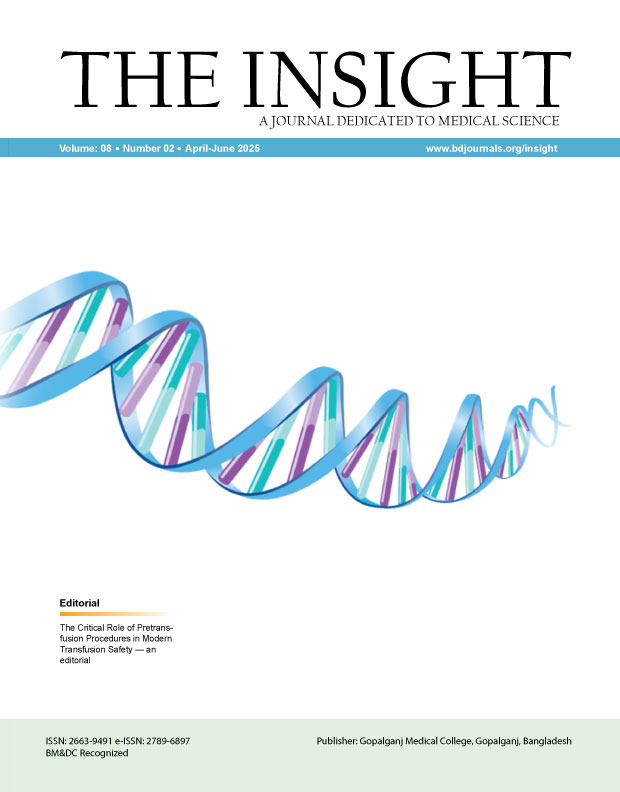Abstract
Background: Cardiac arrhythmias are a major cause of morbidity and mortality in patients undergoing maintenance hemodialysis (MHD). Many arrhythmias remain asymptomatic and undetected, contributing to sudden cardiac death. Understanding their frequency, patterns, and predictors is crucial for improving patient outcomes. Aim of the study: To determine the frequency, types, and possible clinical and biochemical predictors of asymptomatic cardiac arrhythmias among patients receiving maintenance hemodialysis. Methods & Materials: This cross-sectional observational study was conducted at the Department of Nephrology, BSMMU, Dhaka, from April 2023 to September 2024. A total of 49 adult MHD patients meeting inclusion criteria underwent 24-hour Holter monitoring and echocardiographic evaluation. Demographic, clinical, and biochemical parameters were recorded and analyzed using SPSS (version 26). Logistic regression was applied to identify predictors of arrhythmia. Result: Asymptomatic arrhythmias were detected in 77.6% (PACs), 71.4% (PVCs), 59.2% (bradycardia), and 65.3% (tachycardia) of patients. Most events occurred during or immediately after dialysis. Lower post-dialysis magnesium (OR 0.007, 95% CI: 0.00–0.77, p=0.039) and potassium levels (OR 0.11, 95% CI: 0.01–0.84, p=0.033) were significant predictors for ventricular ectopy. Other factors, including age, diabetes, hypertension, and LVMI, were not independently associated. Conclusion: Asymptomatic cardiac arrhythmias are common in MHD patients, with electrolyte fluctuations—particularly reduced post-dialysis magnesium and potassium—serving as key contributors. Routine Holter monitoring and individualized dialysis prescriptions may help in early detection and prevention of fatal arrhythmias.

This work is licensed under a Creative Commons Attribution 4.0 International License.
Copyright (c) 2025 The Insight





 PDF
PDF